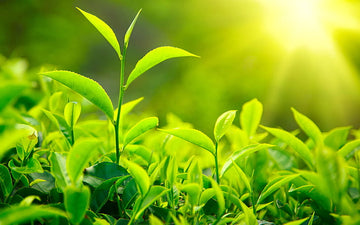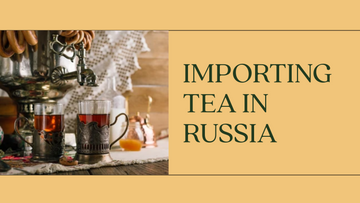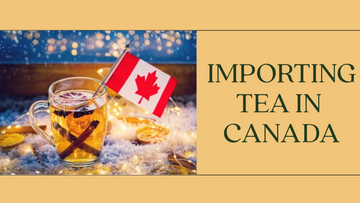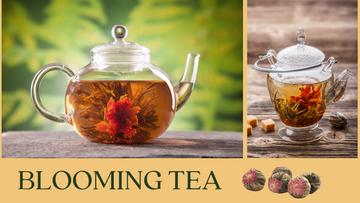
From gardens to your cup, a tea leaf goes through an adventurous journey and the success of the journey depend on how much did you enjoy your cup of tea!
The biggest contributing factor in this journey is of tea leaf grading.
What is that you ask? tea leaf grading is the process of evaluating products based on the quality and condition of the tea leaves themselves.
Let us give you a quick guide as to how it is done.
Whole-leaf grades
|
Grade |
Description |
|
OP |
Orange Pekoe Main grade, consisting of long wiry leaves without tips. |
|
OP1 |
More delicate than OP; long, wiry leaf with a light liquor. |
|
OPA |
Bolder than OP; long leaf tea which ranges from tightly wound to almost open. |
|
OPS |
Orange Pekoe Superior Primarily from Indonesia; similar to OP. |
|
FOP |
Flowery Orange Pekoe High-quality tea with a long leaf and few tips, considered the second grade in Assam, Dooars, and Bangladesh teas. Due to differences in tea picking methods and grading there is no equivalence to most appellation-specific grades in China. |
|
FOP1 |
Limited to only the highest quality leaves in the FOP classification. |
|
GFOP |
Golden Flowery Orange Pekoe Higher proportion of tip than FOP. Top grade in the Milima and Marinyn regions, but uncommon in Assam and Darjeeling. |
|
TGFOP |
Tippy Golden Flowery Orange Pekoe The highest proportion of tip, and the main grade in Nepal , Darjeeling and Assam. |
|
TGFOP1 |
Limited to only the highest quality leaves in the TGFOP classification. |
|
FTGFOP |
Finest Tippy Golden Flowery Orange Pekoe Highest quality grade. |
|
FTGFOP1 |
Special Finest Tippy Golden Flowery Orange Pekoe Limited to only the highest quality leaves in the FTGFOP classification. |
Broken leaf grades
|
Grade |
Description |
|
BT |
Broken Tea Usually a black, open, fleshy leaf that is very bulky. This classification is used in Sumatra, Ceylon (Sri Lanka), and some parts of Southern India. |
|
BP |
Broken Pekoe The most common broken pekoe grade; from Indonesia, Ceylon (Sri Lanka), Assam and Southern India. |
|
BPS |
Broken Pekoe Souchong Term for broken pekoe in the Assam and Darjeeling regions. |
|
FP |
Flowery Pekoe High-quality pekoe. Usually coarser with a fleshier, broken leaf. Produced in Ceylon (Sri Lanka) and Southern India, as well as in some parts of Kenya. |
|
BOP |
Broken Orange Pekoe Main broken grade. Prevalent in Assam, Ceylon (Sri Lanka), Southern India, Java, and China. |
|
FBOP |
Flowery Broken Orange Pekoe Coarser and broken with some tips. From Assam, Ceylon (Sri Lanka), Indonesia, China, and Bangladesh. In South America, coarser, black broken. |
|
FBOPF |
Flowery Broken Orange Pekoe Fannings The finest broken orange pekoe, with a higher proportion of tips; mainly from Ceylon's "low districts". |
|
GBOP |
Golden Broken Orange Pekoe Second grade tea with uneven leaves and few tips. |
|
GFBOP1 |
Golden Flowery Broken Orange Pekoe 1 As above, but with only the highest quality leaves in the GFBOP classification. |
|
TGFBOP1 |
Tippy Golden Flowery Broken Orange Pekoe 1 High-quality leaves with a high proportion of tips; finest broken First Grade Leaves in Darjeeling and some parts of Assam. |
Fannings grades
|
Grade |
Description |
|
PF |
Pekoe Fannings |
|
OF |
Orange Fannings From northern India and some parts of Africa and South America as well as Nepal. |
|
FOF |
Flowery Orange Fannings Common in Assam, Dooars, Nepal and Bangladesh. Some leaf sizes come close to the smaller broken grades. |
|
GFOF |
Golden Flowery Orange Fannings Finest grade in Darjeeling for tea bag production. |
|
TGFOF |
Tippy Golden Flowery Orange Fannings |
|
BOPF |
Broken Orange Pekoe Fannings Main grade in Sri Lanka, Indonesia, Nepal, Southern India, Kenya, Mozambique, Bangladesh, and China. Black-leaf tea with few added ingredients, uniform particle size, and no tips. |
Dust grades
|
Grade |
Description |
|
D1 |
Dust 1 From Sri Lanka, Indonesia, China, Africa, South America, Southern India, and Bangladesh. |
|
PD |
Pekoe Dust |
|
PD1 |
Pekoe Dust 1 Mainly produced in India. |
We at Mittal teas have in house tea tasters so that you can enjoy ONLY the best cup of tea.
Get yours at mittalteas.com




